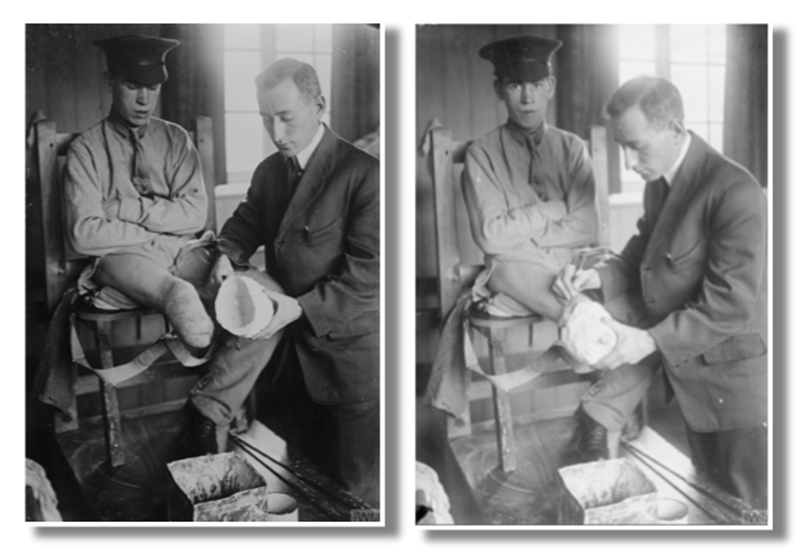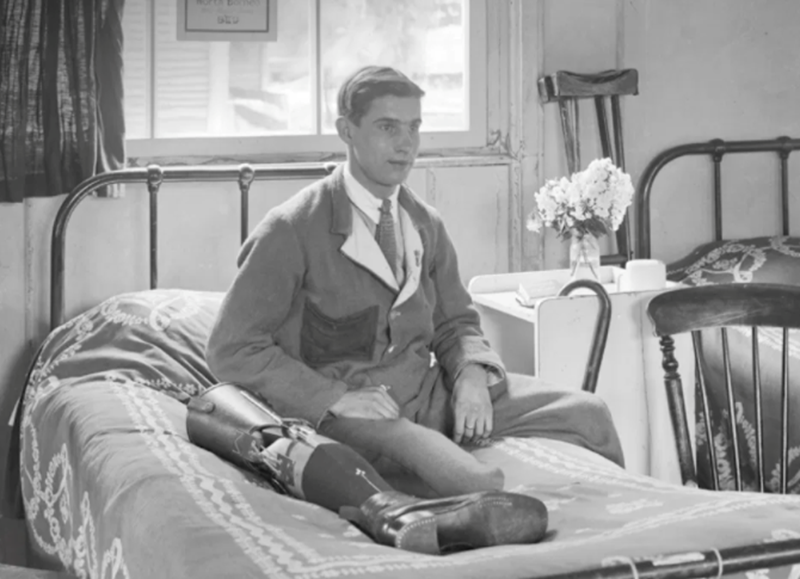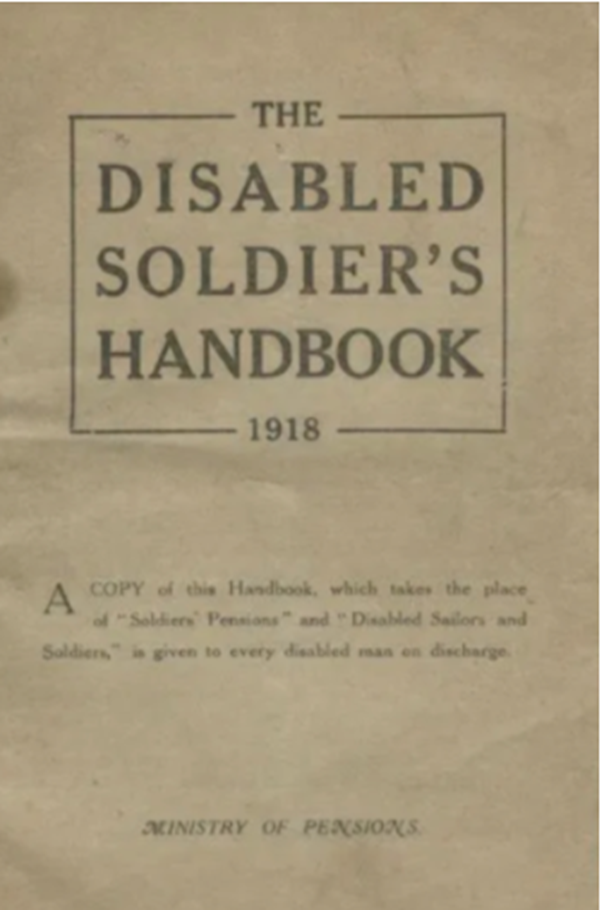The Disabled First World War Soldier : how his pension was calculated
- Home
- World War I Articles
- The Disabled First World War Soldier : how his pension was calculated
A man who was discharged as medically unfit where that unfitness was certified as being either caused by or aggravated by military service was eligible to apply for a disability pension. Later in the war, as men were being demobilised, they were given the chance to put forward any disability for assessment by the Ministry of Pensions. Any disability that became apparent only after discharge could also be put forward.

Men were categorised into six different pension classes based on their permanent rank (or paid acting at the time of disablement). The pension class set conditions on the maximum amount of pension which would be ordinarily paid. In some cases, based on service, a man in Class 5 may be elevated to Class 4 for pension purposes.

Warrant Officer Class 1
Class 1
Warrant Officer Class 2. Master Gunner, 3rd Class. Schoolmaster (when not a warrant officer), Quartermaster-Major, Quartermaster Serjeant.
Class 2
Squadron corporal major. Squadron quartermaster Serjeant. Squadron, battery, troop or company Sergeant Major. Squadron, battery, troop or company quartermaster sergeant. Staff corporal. Staff serjeant. Colour serjeant.
Class 3
Corporal of horse. Serjeant.
Class 4
Corporal. Bombardier. Second Corporal.
Class 5
Trooper. Private. Gunner. Driver. Sapper. Pioneer.
The Class of pension awarded set an initial pension rate to be paid to the disabled man however this rate was then adjusted based on the on the level of disability. Each disabled man would be assessed on a percentage scale, with the full pension being paid at '100% disability' and reduced accordingly for lower rates of disability.
The level of disability could change over time and so men could be frequently re-assessed. The initial pension was typically paid as a ‘conditional award’ until it was deemed that the disability was stabilised, at which point a ‘final award’ would be made.

Additional considerations
Gratuity and Temporary pensions
If, after assessment, a man was found to be less than 20% disabled, or it was deemed to be more appropriate, then the Ministry of Pensions had the powers to award a gratuity payment in lieu of a pension or a temporary pension.
Increases for wife and children
Where a man had children under 16 years of age then an additional amount was paid for each child. This amount did not vary by rank however it was adjusted based on the percentage disability attributed to the disabled man. A similar situation occurred in respect of a man’s wife.
Alternative pensions based on earnings
Where a man could show that he was, with his pension (and any wages), earning below that which he earned before pre-war then he could apply for a top-up from the Ministry of Pension.
Disablement not attributed or aggravated by service
Where a man was disabled and it was determined not to be attributed or aggravated by military service then he would be awarded a gratuity in lieu of the disability pension.
Service Pensions
Where a man was entitled to an army service pension the rate of disability pension paid was lowered to take this into account.
Examples of pension claims
Private John Acton, #52664, Cheshire regiment. 50% disabled due to a dilated heart.


Private Action was paid a pension of 20s per week on account of his disability. The maximum pension for a Class 5 pension in 1919/20 was 40s per week for a 100% disability. Acton’s disability was graded at 50% giving the 20s per week that he was paid.
Private William Abbott, #101260 RAMC. 10% disabled due to malaria.


Private Abbott was paid a pension of 5s 6d per week on account of his disability. The maximum pension for a Class 5 pension in 1919/20 was 40s per week for a 100% disability Abbott’s disability was graded at 10%, so this would ordinarily be 8s per week – the minimum payment being based on a 20% disability. As we can see, however, he received 5s 6d per week.
The only circumstances where the author can currently determine that 5s 6d per week was payable is at a (lower)rate paid to a man who was in receipt of an army service pension. It, therefore, appears that Abbott was possibly either enlisted on a regular term or had previously served on a regular term of enlistment.
Although more work is still ongoing in respect of reconstructing how the war pensions of the First World War operated the author hopes that this short article will help demonstrate how the system worked in 1919/20.
Article by Craig Suddick





